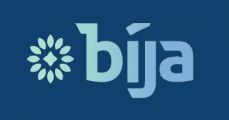
Code Green
Code Green is currently looking for a partner to run an initial pilot of the curriculum. We are currently seeking schools, youth clubs, and various other educational organizations to provide a pilot site and run the actual workshop. The curriculum is broken up into 8-10 lessons of 30-40 minutes each designed to be easily integrated into existing classes or offered separately. Our goal is to revise the material through the pilot so that we can eventually open source the project to any interested party. We will provide the microcontroller equipment, and can assist in developing a greenhouse / planting space if required. If you are interested, please reach out via the Contact page!
Code Green takes a radical approach to teaching coding and technology as a key tool for individuals to actualize their goals – a means to an end rather than the end goal itself. The name Code Green also alludes to the world’s precarious position in relation to environmental crisis, while offering a vision of applying technology to help address this crisis rather than continue to exacerbate it.
Code Green integrates IoT (Internet of Things) device programming and basic web development with urban agriculture. The curriculum was developed as a collaborative project with Benjamin E. Mayes High School in Atlanta, Ga, and the project aims to integrate coding in existing Environmental Science / Horticultural classes. The students at Benjamin Mayes already had an extensive greenhouse and aquaponic setup for which they wish to be able to monitor various conditions in real-time. Based on their feedback, Bija has created a curriculum which utilizes microcontroller programming and web development so that students will be able to program various sensors. These sensors could be used to monitor an aquaponic/hydroponic/traditional greenhouse system, allowing students to track key environmental conditions required for plant growth. When used in partnership with an Environmental Science classe, students are able incorporate these measurements into their normal curriculum calculations.
Specifically, the Code Green curriculum is teaching students to integrate cost-effective sensor devices in the greenhouse powered by small microcontroller IoT devices, through which the data received from the system will be monitored, uploaded to the cloud, and then visualized through through a basic website developed by the students. Each kit, utilized by students in groups of 2-3, has a net cost under $100.
Code Green aspires to increase diversity in Tech and interest in sustainable agriculture projects by taking a hands-on approach with students. Our goal is not to teach full stack development, but rather expose students to an objective-based curriculum through which they will be empowered to learn how to accomplish their goals. The capacity for the adolescent mind to create and learn is astounding. Code Green focuses on teaching students some basics in an active learning approach in coordination with utilizing online resources to self learn, in order to pique interest so students can realize what they are capable of accomplishing.

